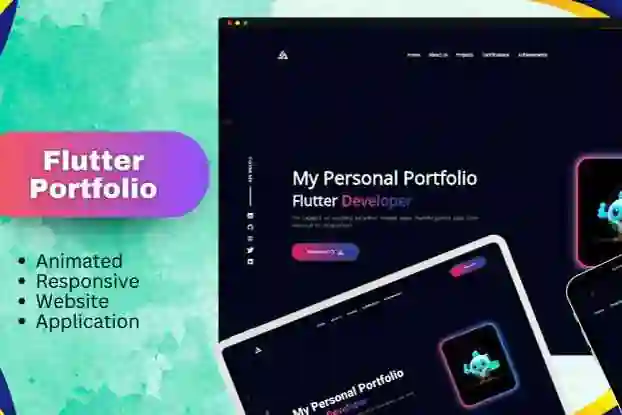Introduction:
In today's competitive tech industry, having a strong portfolio is essential for showcasing your skills and attracting potential clients or employers. As a Flutter developer, one of the best ways to demonstrate your expertise is by building a portfolio app using Flutter. In this blog post, we will explore the process of creating a Flutter portfolio app that effectively showcases your projects and highlights your capabilities as a developer. Let's dive in!
Planning Your Portfolio App:
Before diving into the code, start by planning the structure and design of your portfolio app. Consider the following aspects:
- Define the purpose of your app: Are you targeting potential clients, employers, or a specific niche audience?
- Determine the key features: Decide which projects and information you want to showcase. Consider integrating features like project descriptions, screenshots, technologies used, and links to live demos or GitHub repositories.
- Sketch the user interface: Create a wireframe or rough sketches of how you want your app to look. This will help you visualize the layout and flow of your portfolio app.
Setting Up Your Flutter Project:
Initialize a new Flutter project using the Flutter SDK and your favorite code editor or IDE. Ensure you have Flutter and Dart dependencies set up correctly. You can create a new Flutter project using the following command:
flutter create portfolio_app
Designing the User Interface:
Implement the user interface of your portfolio app using Flutter's powerful widget system. Consider using Flutter's Material Design or Cupertino widgets for a native look and feel. Divide your app into different screens, such as a home screen, project details screen, and contact screen. Leverage Flutter's widget customization capabilities to make your app visually appealing and unique.
Populating Your Portfolio:
Integrate your projects into the portfolio app by creating a data model to represent each project. Store project-related information, such as project name, description, images, and links, in the data model. You can use JSON files, Firebase, or a backend API to retrieve project data dynamically. Iterate over the project data to display each project in the app's UI.
Implementing Navigation:
Create a navigation system that allows users to browse through different screens within your app. Utilize Flutter's navigation widgets, such as Navigator and MaterialPageRoute, to handle navigation between screens. For example, tapping on a project in the project list should navigate to the project details screen.
Showcasing Project Details:
On the project details screen, display comprehensive information about each project, including project description, screenshots, technologies used, and links to live demos or GitHub repositories. Use Flutter's widget composition and layout techniques to present the information in an organized and visually appealing manner.
Contact and About Me Section:
Include a contact section in your portfolio app to provide users with a way to reach out to you. You can include your email address, social media profiles, or a contact form. Additionally, consider adding an "About Me" section to share your background, skills, and achievements as a Flutter developer.
Responsive Design:
Ensure your portfolio app is responsive and adapts well to different screen sizes and orientations. Use Flutter's responsive design principles, such as media queries and responsive layout widgets, to create a consistent user experience across various devices.
Testing and Debugging:
Thoroughly test your portfolio app on multiple devices and emulators to ensure it functions as expected. Utilize Flutter's built-in testing framework or third-party testing libraries to write unit tests and integration tests. Debug any issues or errors that arise during testing to ensure a smooth user experience.
Deployment and Sharing:
Once you are satisfied with your portfolio app, it's time to deploy and share it with the world. Publish your app on platforms like Google Play Store or Apple App Store. Additionally, consider hosting your app's code on GitHub or other code repositories, allowing potential clients or employers to view your project's source code.
Conclusion:
Building a Flutter portfolio app is an excellent way to showcase your skills and projects to potential clients or employers. By following the steps outlined in this blog post, you can create a visually appealing and functional portfolio app using Flutter's powerful capabilities. Remember to continuously update and enhance your portfolio app as you work on new projects to keep it up-to-date and relevant. Good luck in building your Flutter portfolio app and showcasing your talent to the world!










